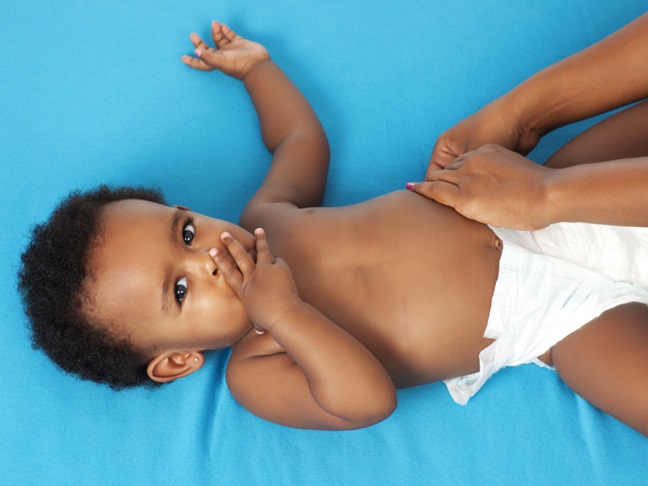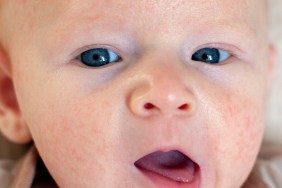All diaper rashes aren’t created equally. Diaper rashes can be caused by diaper wearing, diapers themselves and issues not related to diapers and diaper wearing. Given the moist and dark conditions a baby’s bottom is exposed to, it’s no surprise that diaper rashes are relatively common.
Here’s a few of the most common problems that babies experience in their diaper areas.
Traditional Diaper Rash
Traditional diaper rash presents as pinkish or red skin in the areas where the diaper covers. It runs the gamete from mild to severe. Typically diaper rash is easily identifiable because of the change in a baby’s skin. The skin becomes pink or red and depending on the severity can have fluid filled bumps, scaling, peeling of the skin and/or inflammation. The best treatment for diaper rashes and for keeping diaper rashes from getting worse is prevention. The diaper area should be cleaned and dry, spoiled diapers should be removed immediately, the baby should be given diaper free time to let the air circulate around his bottom and a zinc oxide barrier cream, like Desitin, should be applied with each diaper change. Soaks in warm water can also help to improve a diaper rash. Diaper rashes that don’t quickly heal up using preventative measures should be evaluated by the child’s physician. Some diaper rashes require treatment with hydrocortisone ointment.
Yeast Infection
A diaper rash left untreated could turn into a yeast infection. A yeast infection can occur in both girls and boys and typically appears in the folds of skin in the thighs and around the genitals. The rash is typically screaming red and well defined. It may have red borders and satellite lesion may be present. The often swollen red skin and may be accompanied by small bumps, which could be fluid filled or the skin could be scaly. Children who have been on antibiotics may be more susceptible to getting a yeast infection. While traditional diaper rash treatment may help, antifungal creams are often used to treat yeast infections.
Bacterial Infections
If diaper rashes are left untreated, another complication could occur: a bacterial infection. When normal bacteria that lives on the skin gets into the skin via compromised or broken skin, a bacterial infection can occur. An impetigo infection typically presents as brownish, honey colored crust patches. Fluid or puss filled blisters may also be present. The rash is typically itchy and painful. Another type of bacterial infection is a staph infection. A severe rash, pull filled blisters and a fever may indicate a staph infection. If you suspect a bacterial infection, medical attention is required. An antibacterial treatment is typically required.
While mild diaper rashes typically go away in day or two, if you suspect your child to have a moderate diaper rash, a yeast infection or a bacterial infection, check in with her doctor. If a fever accompanies a rash or if your baby seems severely uncomfortable, you should seek a medical evaluation.








